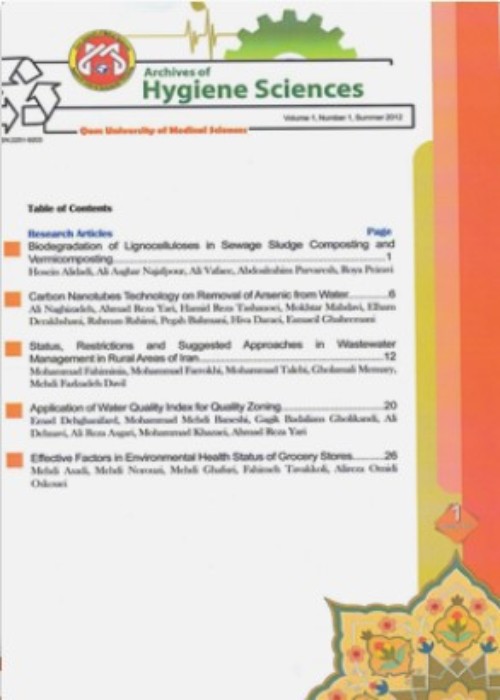Relationship of Formaldehyde Concentration in Ambient Air with CO, NO2, O3, Temperature and Humidity: Modeling by Response Surface Model
Author(s):
Article Type:
Research/Original Article (دارای رتبه معتبر)
Abstract:
Background & Aims of the Study
Exposure to formaldehyde in ambient air has attracted a great attention, due to harmful health effects. This study was aimed to determine formaldehyde concentration in winter and spring seasons, in Azadi square region, Tehran, and the relation of variations of CO, NO2, O3, temperature and humidity with formaldehyde concentration was modeled based on Response Surface Methodology.
Materials & Methods
This cross-sectional study was conducted in 2014–2015 in Tehran. For measuring the formaldehyde concentration, NIOSH3500 method was employed. The concentration of formaldehyde was detected at 580 nm wavelengths by PerkinElmer LAMBDA spectrophotometer model of 25UV/Vis. Data of CO, NO2 and O3 concentration were attained from Tehran Air Quality Control Company. SPSS 16 and Design Expert (version 7) were used for analyzing data.
Results
Results showed the concentration of formaldehyde in the spring was on average 4.7 ppb more compared to winter season. The Model fitted for the prediction of formaldehyde showed a significant p-value (<0.001). Moreover, the R2 and Adj-R2 values were obtained about 0.8237 and 0.7607. In this model, it is observed the parameters of CO, NO2, O3 and temperature has a direct relation with the variations of formaldehyde, and humidity has an indirect relation.Conclusions
Results indicated formaldehyde concentration in spring season is on overage higher than winter spring. The fitted model showed the CO, NO2, O3 and temperature is in a direct correlation with formaldehyde changes in ambient air, and humidity is in an indirect correlation.Keywords:
Formaldehyde , Air Pollution , Photochemical , Ambient Air , Tehran , Iran
Language:
English
Published:
Archives of Hygiene Sciences, Volume:8 Issue: 1, Winter 2019
Pages:
9 to 16
https://magiran.com/p1973040


